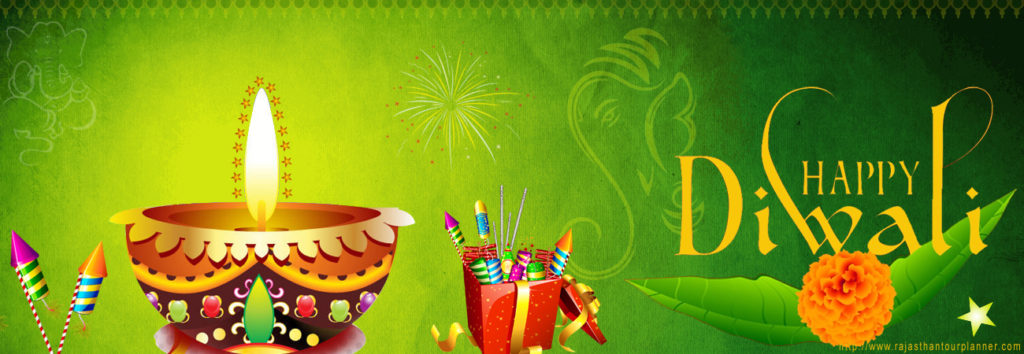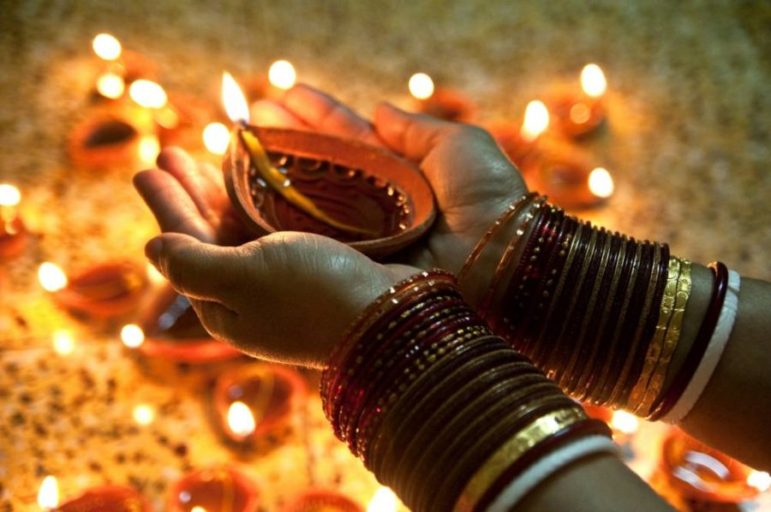
Deepawali or Diwali is the biggest and the brightest of all Hindu festivals. It is the festival of lights: deep means “light” and avali “a row,” or “a row of lights.” Diwali is marked by four days of celebration, which literally illuminates the country with its brilliance and dazzles all with its joy.
The Diwali festival occurs in late October or early November. It falls on the 15th day of the Hindu month, Kartik, so it varies every year.
Each of the four days in the festival of Diwali is separated by a different tradition. What remains true and constant is the celebration of life, its enjoyment, and a great sense of goodness.
THE ORIGINS OF DIWALI
Historically, Diwali can be traced back to ancient India. It most likely began as an important harvest festival. However, there are various legends pointing to the origin of Diwali.
Some believe it to be the celebration of the marriage of Lakshmi, the goddess of wealth, with Lord Vishnu. Others use it as a celebration of her birthday as Lakshmi is said to have been born on the new moon day of Kartik.
In Bengal, the festival is dedicated to the worship of Mother Kali, the dark goddess of strength. Lord Ganesha—the elephant-headed god, and symbol of auspiciousness and wisdom—is also worshiped in most Hindu homes on this day. In Jainism, Deepawali has the added significance as marking the great event of Lord Mahavira attaining the eternal bliss of nirvana.
Diwali also commemorates the return of Lord Rama (along with Ma Sita and Lakshman) from his fourteen-year-long exile and vanquishing the demon-king Ravana. In joyous celebration of the return of their king, the people of Ayodhya, the capital of Rama, illuminated the kingdom with earthen diyas (oil lamps) and burst crackers.
THE FOUR DAYS OF DIWALI-
DHANTERAS: THE TRADITION OF GAMBLING
Some people refer to Diwali as a five-day festival because they include the festival of Dhanteras (dhan meaning “wealth” and teras meaning “13th”). This celebration of wealth and prosperity occurs two days before the festival of lights.
The tradition of gambling on Diwali also has a legend behind it. It is believed that on this day, Goddess Parvati played dice with her husband Lord Shiva. She decreed that whosoever gambled on Diwali night would prosper throughout the ensuing year.
THE SIGNIFICANCE OF LIGHTS AND FIRECRACKERS
All of the simple rituals of Diwali have a significance and a story to tell. Homes are illuminated with lights and firecrackers fill the skies as an expression of respect to the heavens for the attainment of health, wealth, knowledge, peace, and prosperity.
According to one belief, the sound of firecrackers indicates the joy of the people living on earth, making the gods aware of their plentiful state. Still another possible reason has a more scientific basis: the fumes produced by the firecrackers kill many insects and mosquitoes, which are plentiful after the rains.
THE SPIRITUAL SIGNIFICANCE OF DIWALI
Beyond the lights, gambling, and fun, Diwali is also a time to reflect on life and make changes for the upcoming year. With that, there are a number of customs that revelers hold dear each year.
Give and Forgive. It is common practice that everyone forgets and forgives the wrongs done by others during Diwali. There is an air of freedom, festivity, and friendliness everywhere.
Rise and Shine. Waking up during the Brahmamuhurta (at 4 a.m. or 1 1/2 hours before sunrise) is a great blessing from the standpoint of health, ethical discipline, efficiency in work, and spiritual advancement. It is on Deepawali that everyone wakes up early in the morning. The sages who instituted this custom must have cherished the hope that their descendants would realize its benefits and make it a regular habit in their lives.
Unite and Unify. Diwali is a great unifying force and it can soften even the hardest of hearts. It is a time when you will find people mingling about in joy and embracing one another with love.
Those with keen inner spiritual ears will clearly hear the voice of the sages, “O Children of God unite, and love all”. The vibrations produced by the greetings of love, which fill the atmosphere, are powerful. When the heart has considerably hardened, only a continuous celebration of Deepavali can rekindle the urgent need of turning away from the ruinous path of hatred.
Prosper and Progress. On this day, Hindu merchants in North India open their new account books and pray for success and prosperity during the coming year. Everyone buys new clothes for the family. Employers, too, purchase new clothes for their employees.
Homes are cleaned and decorated by day and illuminated by night with earthen oil lamps. The best and finest illuminations can be seen in Bombay and Amritsar. The famous Golden Temple at Amritsar is lit in the evening with thousands of lamps placed all over the steps of the big tank.
This festival instills charity in the hearts of people and good deeds are performed everywhere.
This includes Govardhan Puja, a celebration by Vaishnavites on the fourth day of Diwali. On this day, they feed the poor on a most incredible scale.
Illuminate Your Inner Self. The lights of Diwali also signify a time of inner illumination. Hindus believe that the light of lights is the one that steadily shines in the chamber of the heart. Sitting quietly and fixing the mind on this supreme light illuminates the soul. It is an opportunity to cultivate and enjoy eternal bliss.
FROM DARKNESS UNTO LIGHT…
In each legend, myth, and story of Deepawali lies the significance of the victory of good over evil. It is with each Deepawali and the lights that illuminate our homes and hearts, that this simple truth finds new reason and hope.
From darkness unto light—the light that empowers us to commit ourselves to good deeds, that which brings us closer to divinity. During Diwali, lights illuminate every corner of India and the scent of incense sticks hangs in the air, mingled with the sounds of firecrackers, joy, togetherness, and hope.
Diwali is celebrated around the globe. Outside of India, it is more than a Hindu festival, it’s a celebration of South-Asian identities. If you are away from the sights and sounds of Diwali, light a diya, sit quietly, shut your eyes, withdraw the senses, concentrate on this supreme light, and illuminate the soul.
